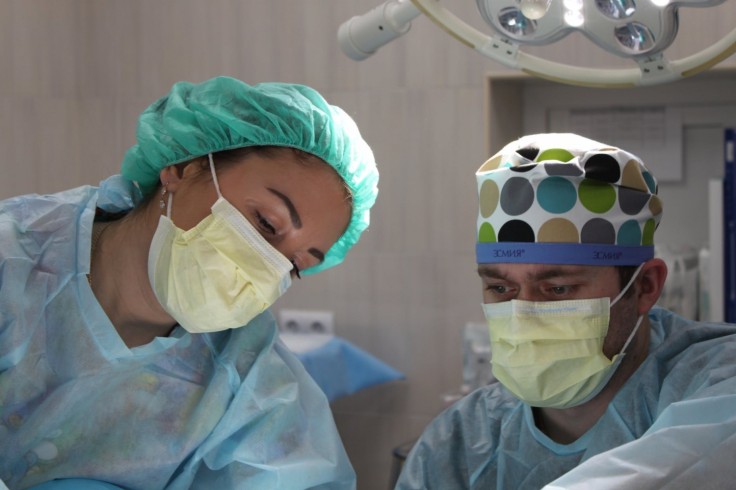More Medical Students Are Telling Their Schools About Disabilities, and Getting a Response
By
The percentage of medical students who told their schools that they have a disability rose sharply in recent years, a new study shows.
Medical schools made changes, called accommodations, for nearly all medical students who disclosed the fact that they have a condition that qualifies as a disability, the study also finds. For instance, schools adjusted testing times, or the length of patient care training.
The reasons for the increase in medical students' disclosures of disabilities are not clear, according to authors of the new research letter in JAMA.
And even with the increase, students with disabilities still represent less than 5% of all future physicians, even when disability is defined as including physical, sensory, learning, psychological, and chronic health conditions.
Having more medical students with all categories of disability could improve the diversity of the physician workforce, reduce stigma and stereotypes about people with disabilities, and inform the care of patients, the researchers say.
Charting the rise
Lisa Meeks, Ph.D., M.A., of the University of Michigan and her colleagues surveyed medical schools in 2016, and again in late 2018 and early 2019.
The second survey came after a major report by the Association of American Medical Colleges, or AAMC, giving medical schools a framework to reduce barriers facing aspiring physicians with disabilities.
In just three years, the percentage of students with disabilities rose from 2.7% to 4.6%, at the 64 medical schools that responded to the survey in both years.
This 69% relative rise was mainly due to growth in the percentage of students who disclosed a psychological disability or a chronic health condition. Psychological disabilities include anxiety, depression and eating disorders.
Meeks notes that the reasons for the rise still need further study, and may include many factors.
"A constellation of events has likely contributed to the increase in disclosure," says Meeks, an assistant professor of family medicine at the U-M Medical School. "This may include increased awareness of the availability of accommodations, an increase in the number of students who have received accommodations throughout their education and are comfortable with their identities as a person with a disability, the creation of educational resources by AAMC, and the diligent efforts of medical education programs to improve accessibility."
Accommodating disability
All the schools that responded to the 2019 survey said they had provided formal accommodations for students related to academic testing. Three-quarters provided accommodations such as note takers, and adjustments to tests of students' clinical skills.
One-third of schools said they had modified their clinical procedures for students. But the researchers note that all students still must complete the required clinical competencies to graduate, but that accommodations allow them to do so through an alternative, equally safe, approach.
Meeks and her colleagues, including senior author Bonnielin K. Swenor, Ph.D., M.P.H. of the Johns Hopkins University's Wilmer Eye Institute, note that their results aren't necessarily representative of all medical schools, because of lower participation in the survey by schools in the south, and the study's focus on allopathic schools.
However, the schools that participated represent more than 41,000 medical students in 2018.
Next steps
The new study comes at a time of increased attention to the issue of disability and health among medical trainees.
"The AAMC is committed to working with leaders at the nation's medical schools and teaching hospitals to shape the culture, establishing accountability, and allocating necessary resources to enhance access and inclusion for individuals with disabilities," said Geoffrey Young, Ph.D., senior director of student affairs and programs at the AAMC.
"The 2018 report, Accessibility, Inclusion, and Action in Medical Education: Lived Experiences of Learners and Physicians With Disabilities, served as the first comprehensive examination of the experiences of medical learners with disabilities, and gave a voice to medical students, residents, and physicians with physical, psychological, sensory, learning, or chronic health disabilities," he says. "Since the publication of this report, we have begun collecting data on the percentage of students who self-identify as having a disability and whether they requested and received accommodations and are using this data to provide enhanced support to students."
Meeks' own institution has made a commitment to accommodating admitted students with disabilities.
"At Michigan, we are committed to a more inclusive learning environment in the fullest sense of the word," says Rajesh Mangrulkar, M.D., the associate dean for medical student education at the U-M Medical School. "The crucial, ongoing research that Dr. Meeks and her team are doing show that we are beginning to move the needle on understanding the lived experience for our medical students who have both apparent and nonapparent disabilities. And while we are making progress, far more work is required for us to build the culture for these students to thrive and develop; all for the betterment of their future patients."
The authors are already conducting further research that will go beyond documenting the current rates of disability disclosure and accommodation. They're seeking to better understand issues such as the career trajectories and experiences of medical students with disabilities, and the potential benefit to patients of having a doctor who has a disability.
© 2025 University Herald, All rights reserved. Do not reproduce without permission.








